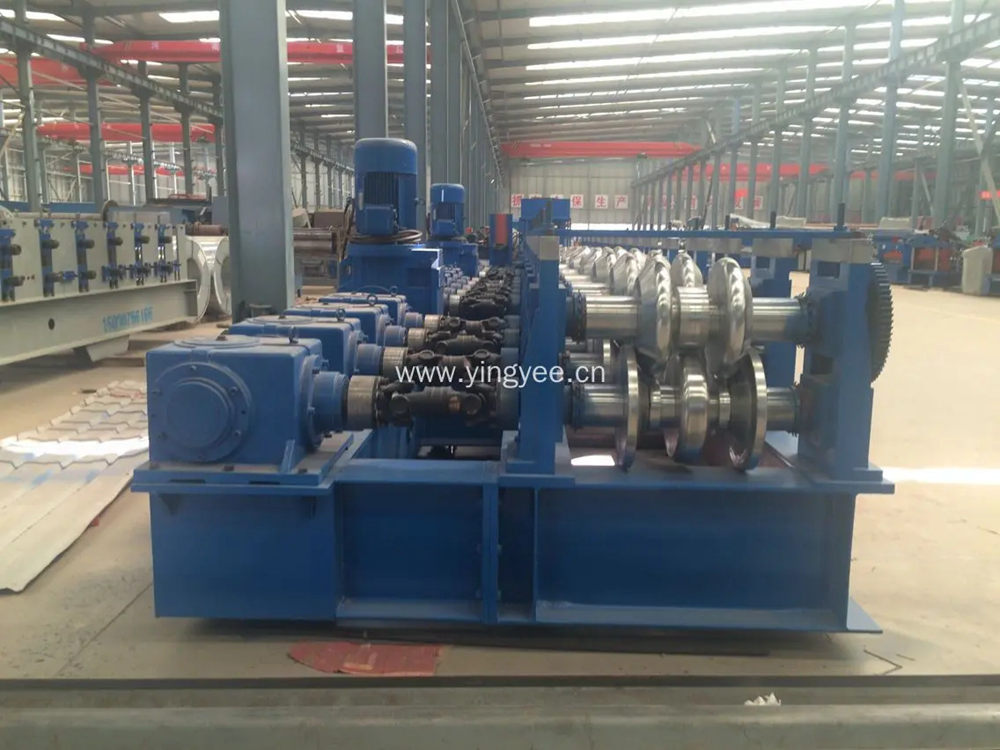
The Role of Drywall Roll Forming Machines in Construction
The construction industry is constantly evolving, with innovative technologies emerging to enhance efficiency and reduce costs. One such advancement is the drywall roll forming machine, a revolutionary tool that streamlines the production of drywall frames and enhance the overall workflow in construction projects.
Drywall, also known as gypsum board or plasterboard, is a versatile material widely used for interior walls and ceilings. It is favored for its ease of installation, affordability, and fire resistance. However, the traditional methods of producing drywall frames often involve significant labor and time, which can delay projects and increase expenses. This is where drywall roll forming machines come into play.
These machines are designed to produce metal studs and tracks used in drywall construction through a continuous roll forming process. The fundamental operation involves feeding a coil of metal into the machine, which then shapes it into specific profiles required for drywall framing. This automated process not only enhances the precision and consistency of the frames but also substantially reduces the manufacturing time.
One of the key advantages of drywall roll forming machines is their ability to manufacture custom frame sizes and configurations. This flexibility is essential in the construction industry, where projects often require specific designs to meet architectural specifications. By adjusting the settings on the machine, manufacturers can produce a wide variety of metal studs and tracks tailored to the unique needs of each project. This adaptability not only improves efficiency but also helps minimize waste, contributing to a more sustainable construction process.

Moreover, the durability of the metal frames produced by these machines offers several benefits. Metal studs are less prone to warping, twisting, or splitting, unlike traditional wooden frames. This ensures a sturdier structure that can withstand the test of time. Additionally, metal frames are non-combustible, providing enhanced safety against fire hazards, which is a significant concern in building design and construction.
Another significant benefit of drywall roll forming machines is their contribution to overall project efficiency. With the reduced production time and the ability to create customized frames, contractors can accelerate project timelines. Additionally, using metal framing can lead to quicker installation processes, as metal components are usually lighter and easier to handle compared to wood. This advantage not only improves labor efficiency but also lowers associated labor costs.
Investing in a drywall roll forming machine can provide significant long-term financial benefits for construction companies. While the initial investment in the machinery may be substantial, the savings on material costs, labor, and time can quickly offset this expense. Furthermore, as demand for commercial and residential construction continues to rise, companies equipped with advanced machinery will be well-positioned to capitalize on new opportunities in the market.
In conclusion, drywall roll forming machines are transforming the way construction projects approach drywall framing. By providing efficient and customizable metal framing solutions, these machines help enhance productivity and reduce costs. As the construction industry continues to evolve, the adoption of these innovative technologies will likely play a crucial role in shaping the future of building practices, leading to safer, faster, and more sustainable construction solutions. As technology progresses, projects will not only meet modern design needs but also adhere to the high standards of efficiency and sustainability that are becoming increasingly important in today’s urban landscapes.